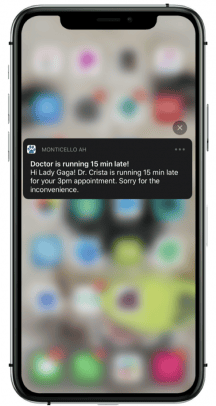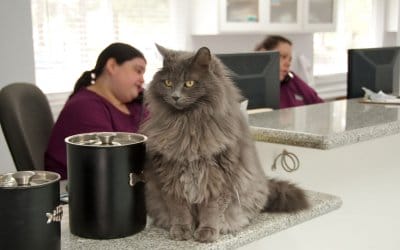Loyalty programs are all the talk these days. You don’t have to look very far to find a business with a loyalty program. Coffee shops were among the first to discover the value of a loyalty program for client retention but now all sorts of businesses have jumped on the band wagon, including online retailers, airlines, and even human healthcare. And the question arises, should you be offering a loyalty program in your veterinary practice? Here is an overview to help you decide.
Client retention vs. acquisition
There are two important activities that every vet practice should be focused on for the health of their practice: getting new clients in the door and keeping their current clients happy. However, most marketing programs in our hospitals are aimed at new client acquisition, such as referral programs, strengthening our online presence or getting positive online reviews. Veterinary practices tend to be less focused on keeping their current customers engaged and loyal.
Why does this matter? Your revenue is directly impacted by the number of clients you have. It makes sense therefore, that getting new clients is a focal point for most clinics. But, it’s typically much harder to get new clients than it is to keep your existing clients happy. Think of it this way: Client acquisition is like going out on a first date—it’s labor intensive, you have to dress up, put a lot of effort into having good conversation, and put your best foot forward to make a good impression. Client retention is more like going on repeat dates with the same person, where the conversations get easier and you develop a real relationship. That’s where the real value is for the health of your practice, and the goal is to get to the “ongoing dating” stage with as many clients as you can.
Loyalty programs are powerful because they are one of the easiest marketing tools to address client retention. When you have a mobile app with a built-in loyalty program, you have essentially created a captive audience for your business and a mechanism to show appreciation and provide perks to your existing clients. For the pet owner, the better the job they do caring for their pet, the more rewards they earn. And just like our animal patients, our clients like to be acknowledged and rewarded for good behavior.
Types of loyalty programs
Not all loyalty programs are the same though. Even though the average consumer belongs to over 25 loyalty programs, they only actively participate in a handful. What is different about the more engaging programs? There are 5 key differentiating factors but one of the most important is the concept of gamification. When a loyalty program is gamified, it is strategically designed to drive revenue. [bctt tweet=”When loyalty programs bring in elements of game-playing (such as point scoring, competition, rules of play), they can significantly boost the average client transaction and number of visits.”] But to do this, there are some key ingredients for success you need to capitalize on:
Interaction at the point of sale.
With a well-designed loyalty program, consumers have some awareness that if they change their behavior (and spend more) they will advance towards a goal (or reward). The most powerful interaction that can take place at the point of sale is with your front desk staff. Just like forward-booking, when the receptionist engages the client at the checkout and encourages them to round up to get more loyalty credits, they are very motivated to purchase additional products such as parasite prevention or diets from you, their veterinarian, rather than from a big box or online retailer. But if the program is over-automated and clients aren’t reminded at the point of sale, then the ability to generate additional revenue is diminished and your loyalty program becomes strictly a discount program.
Fear of missing out
(FOMO) on an opportunity is a very strong driver of behavior. Whether you are constantly checking your Facebook, so you don’t miss a post or comment, or you buy 2-for-1 T-Shirts, you are under the influence of FOMO. Loyalty programs that can harness this psychological tactic are much more powerful than their counterparts.
Here’s a personal example: I have never looked at groceries and thought “I am going to spend an additional $20 on food so I can get more points at the grocery store”. The FOMO isn’t there. I’m motivated to stay with City Market but I’m not really motivated to spend more money with them. Their loyalty program is a client retention marketing program. There is still value to this type of program but it’s not likely to drive revenue.
Alternatively, when I visit Kohl’s, for every $50 spent, I earn $10 in “Kohl’s cash”. This means that I am very motivated to spend more at each transaction because I don’t want to miss out on an opportunity to save. This is particularly powerful if the invoice is within $5 to $10 of the next $50 increment. This tactic converts their loyalty program into a revenue driving program.
My favorite loyalty program for veterinary practices
It is important to recognize that we aren’t serving coffee or online movie access but instead we are serving health care. And, we are in an industry unlike others where the profit margin is tough to manage. There isn’t a lot of wiggle room if our goal is to advance our profession to where doctors, techs and receptionists earn wages that start matching those in other industries.
The best loyalty program is one that focuses on both client retention AND revenue building. My favorite program for veterinary practices is a stamp program where clients earn a stamp for every $100 spent per invoice.
Then, when they reach 16 stamps, the client unlocks a $100 credit towards a future visit.
There are several things that happen here. When clients are close to the next $100 increment, they are very motivated to “round up” with an additional purchase of something else they need for their pet. Maybe that means they buy a 12 pack of heart worm prevention vs. a 6 pack, or maybe they pick up a bag of food instead of going to the pet food store in your town. The reason this happens is because if they don’t spend more, they are potentially missing out on unlocking a reward for themselves down the road (FOMO).
Key point: Stamps are earned per invoice which drives the ATC and the reward is saved for a future visit which drives annual client visits.
Test out a loyalty program in your practice
If you don’t have a loyalty program in your practice currently, I urge you to test one out. You can start with a manual program or one that is embedded in a practice app. Our results show that rewarded clients visit 3 additional times per year compared to the prior year and spend $621 more per year compared to the prior year. Less than 5% of your clients can boost annual revenue by $100,000+! And remember loyal clients who feel good about their experience with your practice are more likely to refer you to friends and family. Feel free to reach out if you have any questions!
Stacee Santi, DVM is the CEO and founder of Vet2Pet, where she and her team developed the only customizable, all-in-one client engagement platform for veterinary practices. Regarded as a key opinion leader on innovative strategies to connect with clients and improve patient care and client service, Stacee is a renowned national speaker and author. She’s also the former roller skating champion of New Mexico. You can reach her at [email protected].



